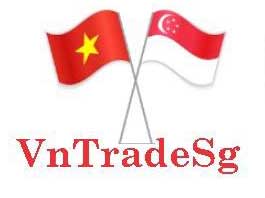|
The Vietnamese economy is facing huge inflationary pressure, requiring appropriate management measures, especially in stepping up the coordination of monetary and fiscal policies and price regulation to stabilise the macroeconomy. |
|
During the first half of 2022, the consumer price index (CPI) witnessed rises every month, with the largest gain seen in February due to the Lunar New Year holiday, while the smallest rise was in April at 0.18% over the previous month. Data released by the General Statistic Office showed that core inflation in the first six months of the year rose 1.25% over the same period last year, compared to the average CPI rise of 2.44%, demonstrating that consumer prices were primarily driven by food and fuel prices. According to Associate Professor Ngo Tri Long, as the Vietnamese economy made a strong recovery in the first half of 2022, the rising demand of manufactured goods for consumption and export coupled with higher global commodity prices pushed up the prices of essential goods and services, but overall prices remained in check. However, rising global prices will put pressure on the production costs of enterprises, causing pressure on inflation in the second half of the year. Furthermore, high fuel prices are causing prices of goods and services to go up, placing pressure on production and business, which will in turn slow down economic recovery. Many are worried that the Vietnamese economy will face difficulties from rising inflationary pressure. Recently the Government has aggressively asked ministries, agencies and localities to implement synchronous measures to stabilise prices and minimise the negative impacts on socio-economic development. Promptly introduced policies such as cutting value added tax, environmental protection tax and many other fees have helped to stabilise enterprises’ operations and people’s lives. It is expected that there will be many challenges facing the economy in the latter half of 2022. One of the most worrying problems is the falling purchasing power while rising input costs make enterprises unable to mark down the prices of their goods. What is even more difficult is that enterprises do not dare to sign long-term and high-value contracts because they are unable to calculate the input costs, which are rising day by day. In the meantime, it can be clearly seen that budget revenue in the first half of 2022 mainly came from tax and fees related to land while revenue from manufacturing and business was very small, indicating that the health of enterprises remains weak. Many countries in the world are battling rampant inflation and as a highly open economy, Vietnam will face a profound impact. Professor Ngo Tri Long stated that inflationary pressure in the final months of the year mainly comes from imported input materials. In the face of impacts from rising global prices of input materials and a surge in domestic aggregate demand, experts have recommended many solutions to curb inflation in the remaining months of the year. In addition to stepping up the coordination of monetary, fiscal policies and price regulation to stabilise the macroeconomy and accelerate the 2022-2023 economic recovery programme, it is also necessary to formulate scenarios to deal with changes in the financial market. In addition, the Government needs to promptly remove obstacles in policies and mechanisms, create a fair and open business environment, and diversify sources of supply to avoid reliance on a single market. Once synchronous measures are implemented, it is likely that full-year inflation will be kept at under 4%. |
| NDO |
Synchronous measures needed to ensure Vietnam’s macroeconomic stability
For more information, please contact Vietnam Trade Office in Singapore at [email protected]
















